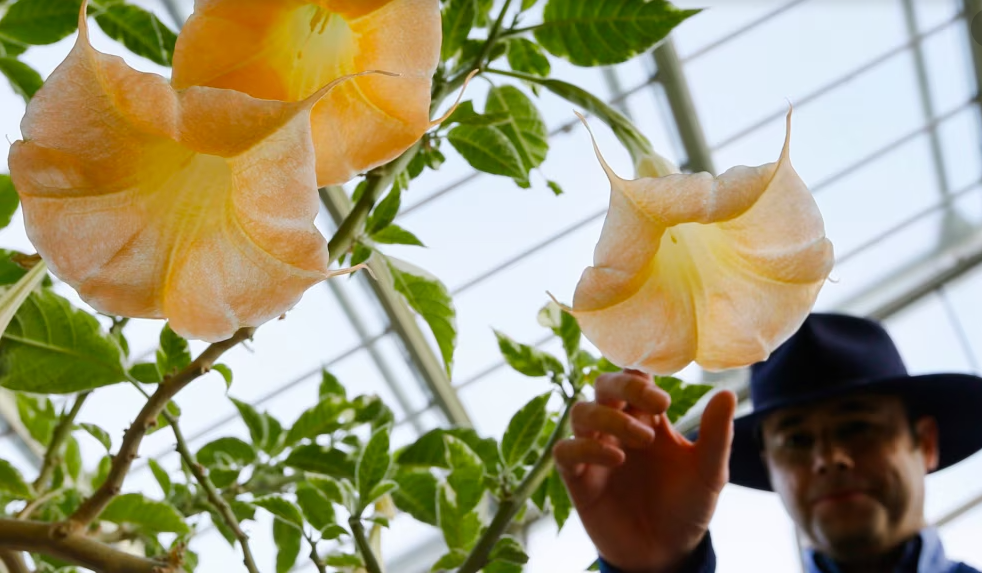FILE – An employee touches the flower of a Datura Stramonium plant, part of the nightshade family, at The Royal Botanic Gardens in London. The nightshade family is known to have toxins in fruit or in stems and leaves.(AP Photo/Kirsty Wigglesworth, File)

From VOA Learning English, this is the Health & Lifestyle Report.
Actor Alicia Silverstone worried fans on social media recently. While on a trip to England, she posted a video of herself tasting a poisonous berry she found along a sidewalk.
Silverstone, who appeared in the 1995 movie Clueless, said she thought the fruit was a tomato. But when she bit into it and found that it had an unusual taste, she realized that it was not the common food.
Plant expert, Jessica Damiano, recently wrote about poisonous plants that look like common foods for the Associated Press.
She said the fruit that looked like a tomato appears to have been a Jerusalem cherry.
Often sold as a houseplant, all parts of the Jerusalem cherry are poisonous. The American Society for the Prevention of Cruelty to Animals says the plant is not only harmful to humans but also to dogs, cats and horses. Eating large amounts can be deadly. Silverstone was lucky because she did not swallow the berries.
She is also lucky because the berries were reddish orange. This means they were ripe. While all parts of the Jerusalem cherry are poisonous, the plant’s unripe berries can be especially dangerous. They can cause problems with the central nervous and gastrointestinal systems. Symptoms from eating the fruit include mental confusion, stomach pain, high body temperature, vomiting, paralysis and more.
The Jerusalem cherry is a member of the nightshade family. It is in the same family of plants that includes tomatoes, eggplants, peppers, potatoes and tomatillos. Although the fruits of those crops are safe to eat, their leaves are toxic.
And the deadly Canadian moonseed can be confused with wild grape. However, its taste is so bitter that you would likely spit it out before swallowing it. This is a good thing because eating it can lead to death.
If you think you have swallowed a toxic plant by mistake, contact a poison control center in your area or your doctor. There is additional information on the website poison.org.
Damiano advises to use common sense with plants you find in the wild. If you are not completely sure that something is food, do not eat it.
Jessica Damiano reported this story for The Associated Press from New York City. Anna Matteo adapted it for VOA Learning English.
